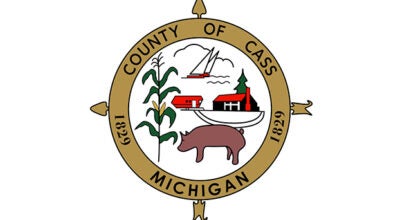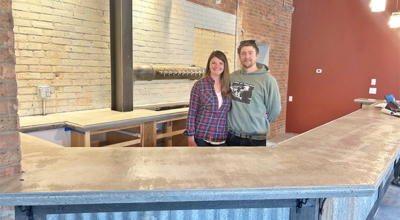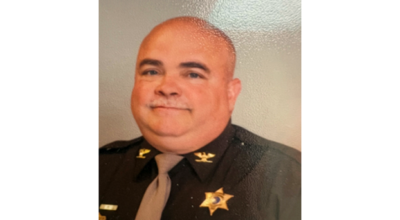SMC’s STEM camp is elementary
Published 6:20 pm Wednesday, August 16, 2017

- Children across southwest Michigan converged at SMC last week for the school’s annual STEM camp. (Submitted photos)
Southwestern Michigan College’s Aug. 8-10 STEM camp consisted of four workshops — one per letter — for more than 200 students entering grades 4-6 this fall.
Campers converged from Bangor, Battle Creek, Berrien Springs, Bristol, Cassopolis, Coloma, Covert, Decatur, Dowagiac, Edwardsburg, Elkhart, Hartford, Jones, Kalamazoo, Lawton, Marcellus, Mattawan, Milford, New Paris, Niles, North Liberty, Parchment, Portage, South Bend, Stevensville, Three Rivers, Vandalia, Vicksburg and Watervliet.
“It’s a great age to tap into because of their excitement,” SMC Physics Professor Andrew Dohm said.
Dohm wrote the $7,300 grant Bosch Community Fund awarded and taught engineering, designing roller coasters with ball bearings and plastic tubing.
Dohm landed $2,865 in 2014 for SMC’s STEM Club and $11,850 last summer for a high school robotics camp.
Campers are excited and engaged — particularly during technology, their favorite segment by a show of hands, building projects with Elenco Electronic Snap Circuit kits guided by Dave Spurlock, teaching at the college for 20 years.
A colorful project manual diagrams how to assemble plastic modules to create radios, digital voice recorders, burglar alarms and doorbells.
Three girls — Julieann, MiKayla and Lily — make a lie detector.
In this group of 18, girls outnumber guys, 11-7.
Eighty-seven girls registered overall.
STEM camp stresses problem-solving, collaborative teamwork, critical thinking, communication and creativity.
If you don’t regard mathematics as creative, you haven’t experienced “mathematical art” with Dr. Keith Howell, SMC Math/Science Department chairman.
He presents STEAM, with creativity the common denominator.
“Art and music are creative processes,” Howell explains, “but so is mathematics, which is necessary for designs of cars and airplanes. A lot of art is based on math and a lot of math is based on art,” which he demonstrates with three triangle vertices — in geometry, points where two or more curves, lines or edges meet.
Rolling a die (singular form of dice) numbered one-six, Howell transitions from hand-drawn dots to a plotting-accelerating Microsoft Excel program.
“I want lots of dots!” exclaims Howell, letting the machine scroll to 10,500. The cumulative effect is a Pointillism painting of a Sierpinski triangle — an equilateral triangle repeatedly subdividing into smaller equilateral triangles.
Edwardsburg teachers Nichole Dohm and Deb Kraska led science experiments to spectacular effect, blowing up balloons with candy and Diet Pepsi (Sweet Tarts work better than Nerds!); making their own erupting lava lamps by mixing vegetable oil and water in a beaker, adding a few drops of food coloring and dropping in an Alka-Seltzer tablet; and making popcorn kernels dance by combining water, vinegar and baking soda.
A chemical reaction occurs between acetic acid in vinegar and sodium bicarbonate in baking soda.
This causes a chemical energy release and gas (carbon dioxide) formation.
Some gas bubbles adhere to the kernels and raise them to the liquid’s surface because the kernels and bubbles together have less density than water.
Gas bubbles burst at the surface, releasing carbon dioxide into the air. Once bubbles burst, the density of the kernel is again greater than water and sinks back to the bottom.
Acid-base reactions are employed in baking to make bubbles form in cakes or cookies, helping make baked goods light and spongy instead of heavy and dense.
“What causes this reaction so carbon dioxide fills our balloons?” Kraska asks. “A big thing about this experiment is the candy surface. The more bumps and ridges, the more carbon dioxide bubbles have to attach to. These candies are not perfectly smooth, which we’d be able to see if we put them under a microscope.”
They also try Mentos and mints, hypothesizing mints will yield larger balloons only to conclude “it didn’t happen that way.”
“Wonderful corporations like Bosch are willing to support STEM,” making the camp free to all participants, Dohm said.






